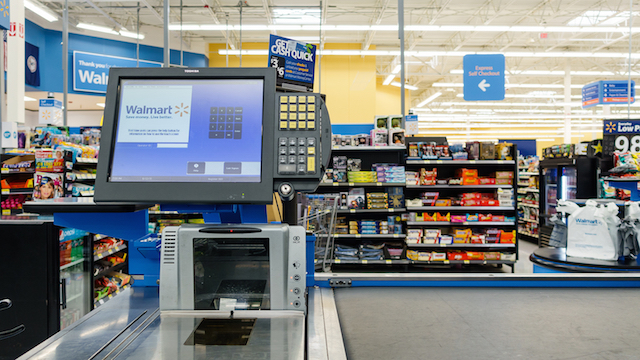At headline level, the latest Walmart results appear gloomy.
However, the vast majority of the decline is attributable to Walmart’s foreign operations, most notably Asda in the UK which has been losing sales and market share at a rapid pace.
Aside from Sam’s Club, the picture within the US is far more positive and it clearly shows that after a number of years of relatively stagnant performance, Walmart is once again making progress. During the 2015 calendar year, Walmart grew its market share of all retail sales to 9.21 percent – the first period of significant growth in over five years. Moreover, productivity at stores improved with sales densities up for the first time in many years.
That Walmart has made progress is significant, not least because its dominance in the retail sector is often seen as a product of the thinking of yesterday: the era when it spread its stores across the country and pulled in customers by virtue of its comprehensive range, low prices, and convenience.
In many places that old thinking still has some validity; there are locations where Walmart remains the go-to retailer for all kinds of products. However, it is a fundamental and inconvenient truth that the way in which people consume is changing rapidly.
For the past 10 years, Walmart appeared to be on the back foot in terms of rethinking its business model for this new landscape. And, as the evidence attests, the impact on has been negative. Walmart may have a 9.2 per cent share of all US retail today, but five years ago that figure was 9.9 per cent. Even more telling is that despite its relative youth and the fact that it still doesn’t play strongly in the voluminous grocery market, Amazon already has a share of 1.9 per cent.
The central issue has been the rise of online – with its uber-convenience, its competitive pricing, and its unparalleled choice. This has helped to undercut the rationale of some visits to Walmart’s stores. That doesn’t mean to say that stores aren’t relevant – but it does mean that they are less relevant than they once were. The evidence for this can be seen in Walmart’s productivity numbers which, in terms of sales density, are down by around 2.1 per cent on five years ago even after the latest gains.
As much as Walmart dominates the old retail landscape, its grip on digital is less impressive. Of all online retail sales in the US, Walmart has just a 2.5 per cent share. That’s lower than its overall share, and far lower than Amazon’s 23.7 per cent share of the online market. Given that online is where the growth is, Walmart needs to play far harder in that space if it is to retain its retail crown over the longer term.
As tempting as it is to focus on the digital space, Walmart’s challenges are not just online. In the physical world the rise of the dollar stores and other discount formats has increased competition and put stores in some locations under further pressure.
None of this is news to Walmart which is why it has actively been reappraising the way in which it does business, both online and in stores. In terms of the latter, new formats are being trialed; these place much greater emphasis on experience, inspiration and ease of shop and are designed to make the store more of a destination in the digital era. Walmart has also been active in assessing the space and store numbers it needs to service demand: this is inevitably less than it once was, which is one of the reasons why some stores are being closed.
On the eCommerce front, arguably Walmart has only really started its journey. However, we believe its advancement – and the fact it is able to leverage its sizable store base as part of the distribution and fulfillment operation – does give in some advantage over Amazon and other online players. Certainly, Walmart may have been relatively late in coming to the eCommerce party, but now it has arrived it brings with it a very considerable set of party tricks, including massive economies of scale, superior technology, and an advanced and extensive logistics operation.
All that said, these are early days in Walmart’s transformation. As important as its size and scale are, they are also an encumbrance to making rapid change. Moreover, they often mean that the change comes with a cost attached.
While Walmart will continue to advance on the sales front, the cost, at least over the short term, will be lower profits and returns. That is a price worth paying to retain the advantages of being the world’s largest retailer.
- Neil Saunders is CEO of retail analyst Conlumino.






